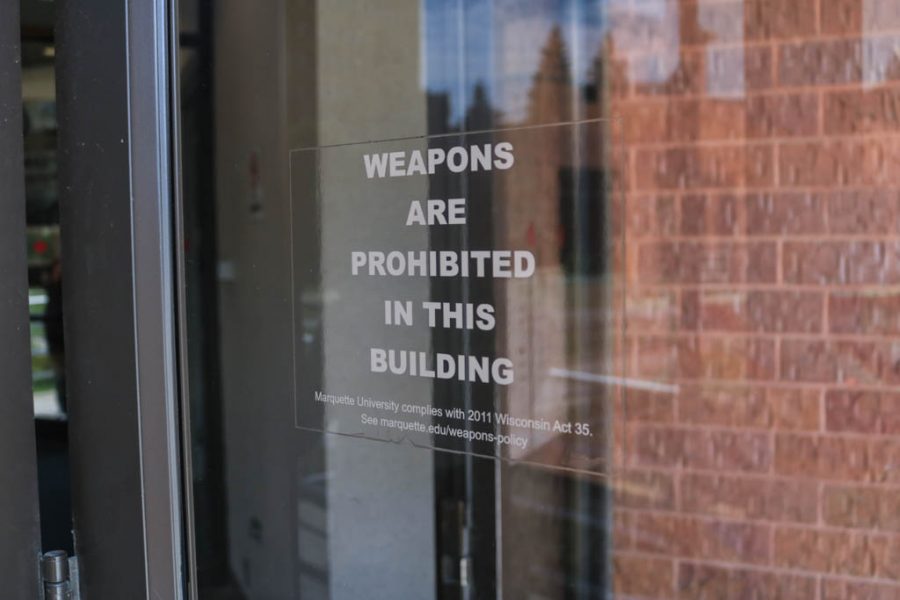The Marquette University Police Department worked on revamping its active shooter program this summer.
Capt. Jeff Kranz said that due to a recent increase of shootings throughout the United States, it is important to be prepared.
“I think one of the driving forces behind it was the uptake in spring 2017 through this year, there were a lot of cases of active shooters,” Kranz said.
Renee Piquette Dowdy, assistant director of student staffing and training for the university, said she worked carefully with Kranz to come up with a program to train desk receptionists and residence assistants this fall. Dowdy said this program is not new, but adjusted.
This year, 132 RAs were trained. The DRs were all trained online or in person.
Kranz added that classes have also been offered in the AMU before, but they were not advertised heavily. This year, he said posters will be put up to advertise it further in advance.
“We are trying to raise awareness,” Kranz said.
Gabriella Lorance, a sophomore in the College of Arts & Sciences, is a first-time RA at Schroeder Hall. She said she appreciated being trained about active shooters.
“It definitely helped me feel more prepared. I had done training before, but (the new training) really stressed ways to keep yourself and your residents safe, which I would never have thought through before,” Lorance said.
Kranz said the training he offered to RAs and DRs during training week was more personalized, offering a foundation of how to stay safe.
“What is most helpful about active shooter training is becoming familiar with the concepts of run, hide, and fight to prepare oneself for a worst-case scenario situation,” Dowdy said.
Lorance said the tone of the presentation was informative and respectful.
“Even though training can only do so much in comparison to being in the actual situation, having the conversation at least was important to me,” Lorance said.
Dowdy said that learning about what to do can often be challenging, but it is important to stay educated and confident in one’s ability to know what to do.
“This type of practice, and the practice for a variety of crisis situations that RAs receive, are with the purpose to help them feel confident in their resources and options in any given situation,” Dowdy said.
This summer, Kranz said his team of public safety officers also went to every academic building on campus to identify the safest rooms if there was an active shooter threat. A public safety officer went through each building identifying multiple safe rooms, as well as things that could be improved in the room to make it safer.
Kranz said it is important to have multiple rooms for safety. “That’s the goal … not just to have that one room. (The) goal is to have multiple routes to keep yourself safe,” Kranz said.
Soon, Kranz said there will be a way for faculty and staff to recognize which rooms are considered safer than others if an emergency occurs.
Kranz said there is importance in “trying to figure out the best way to identity without tipping off someone who wants to do harm.”
When a way to release the information is decided, he said it will be released internally to staff and students.
“I think it is taking a proactive approach to this, and that’s kind of our goal. It’s taking action into motion,” Kranz said.



